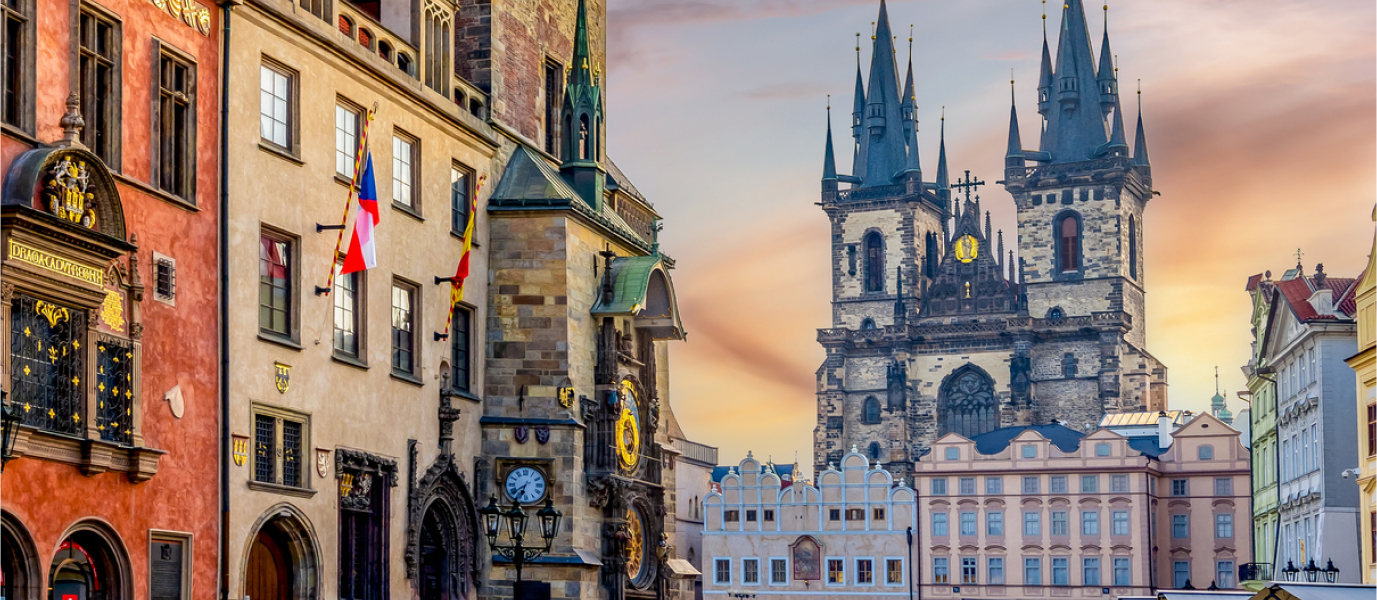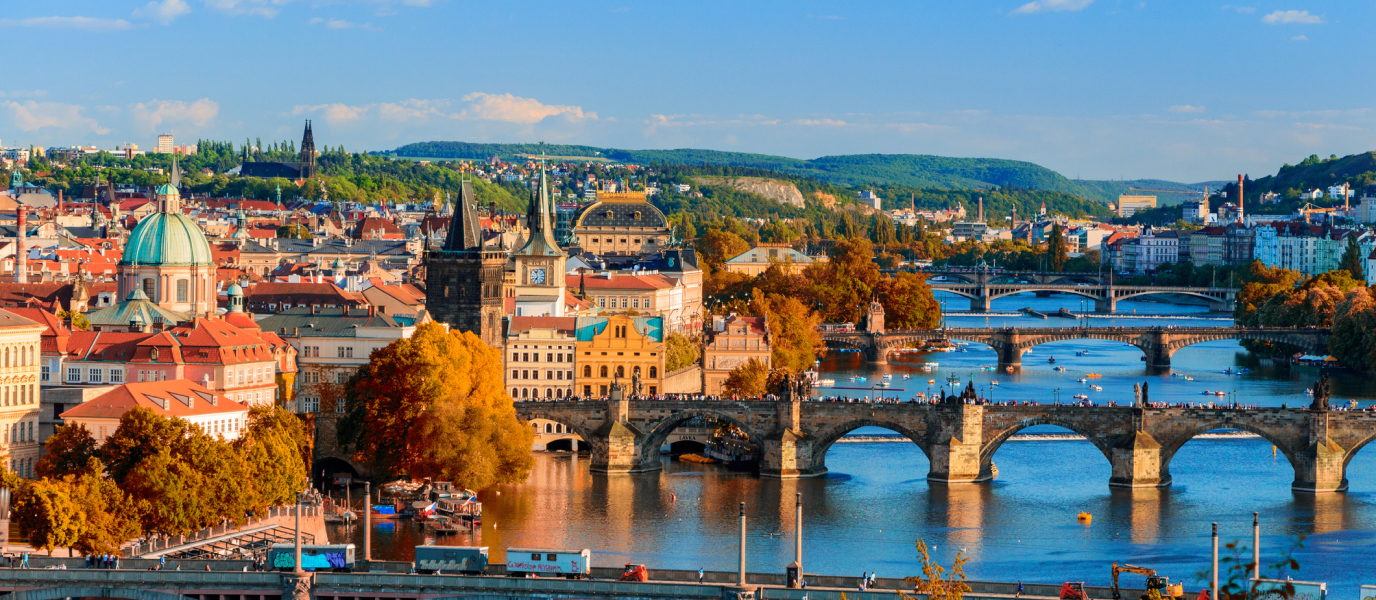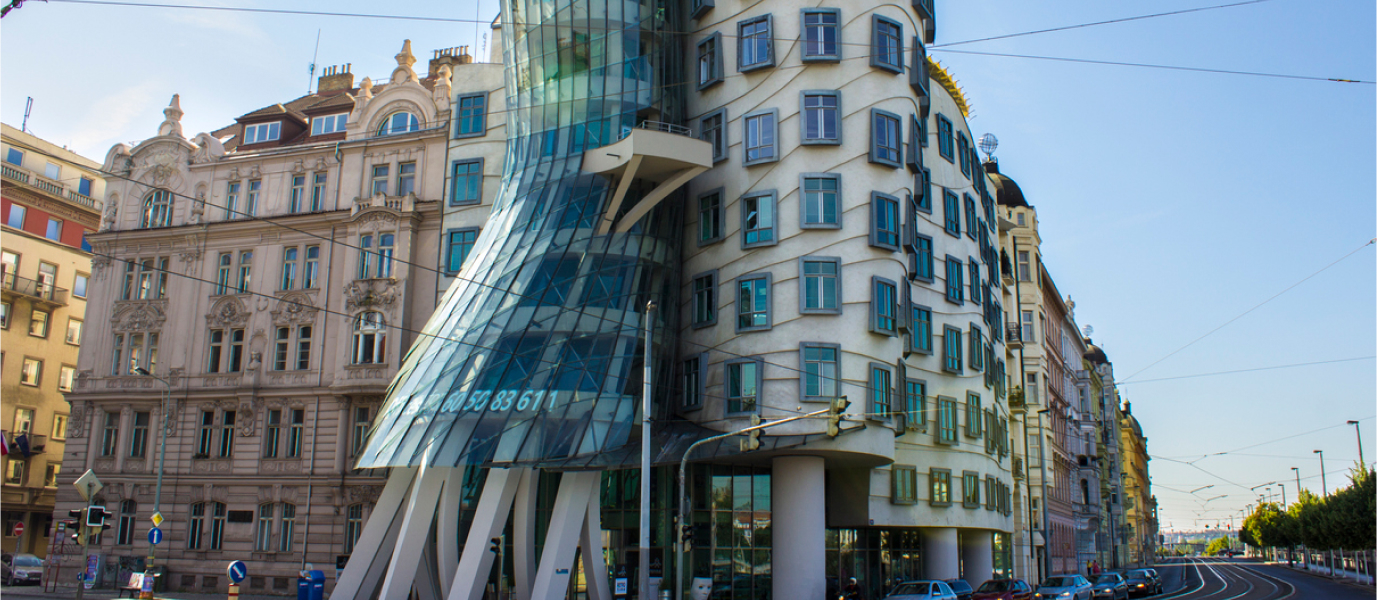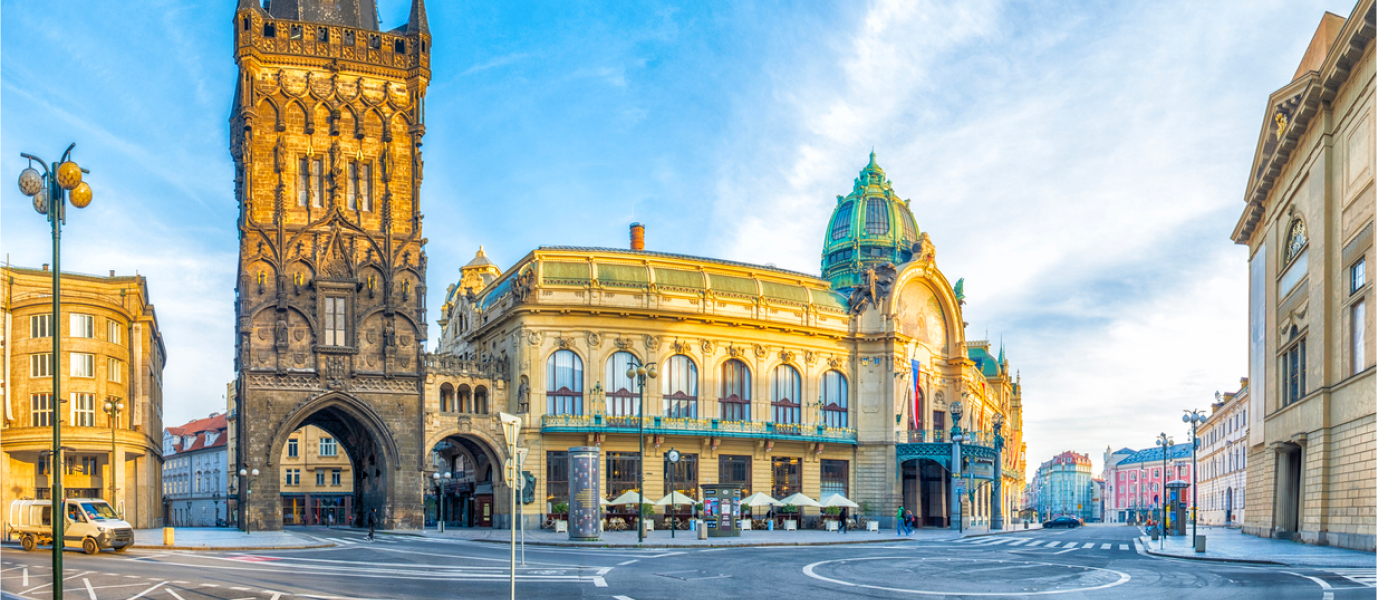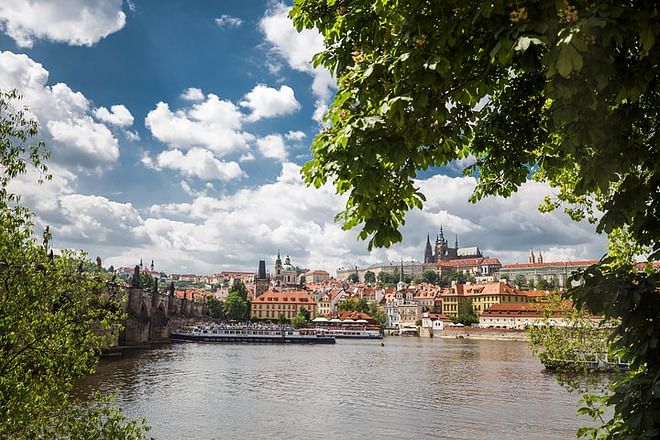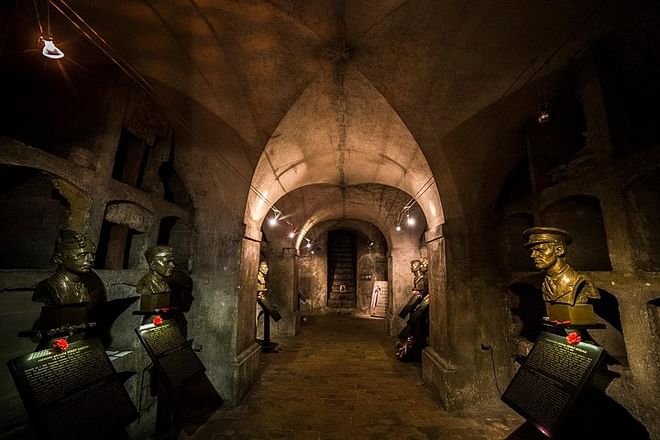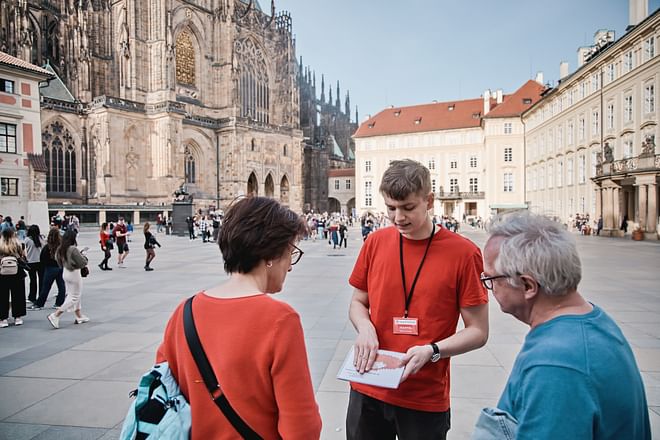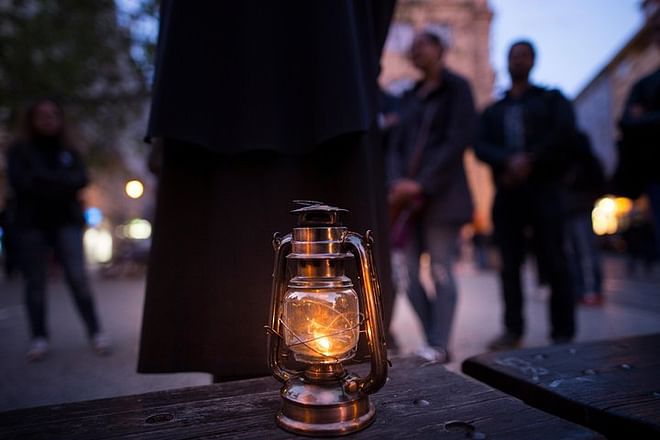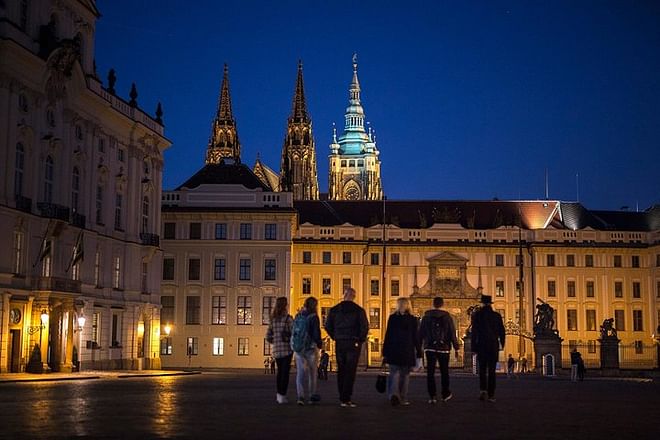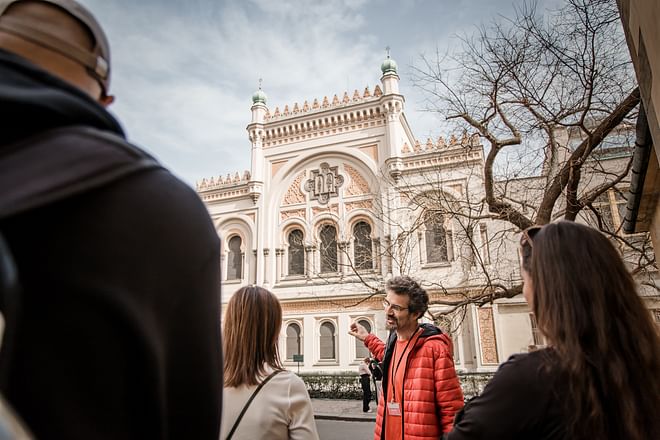Staré Město, the Old Town, is home to the highest number of squares and churches forming the medieval quarter of Prague. From the eleventh century, buildings spanned the area between the castle and the right bank of Vltava river, until it became one of the most bustling parts of the city. One of the most recognisable churches in the neighbourhood, and which most interests us in this Prague guide, is Týn Church.
Old Town Square
Be sure to make the most of your stay in Prague by strolling through Staré Město on your way to
Old Town Square, the true heart of the area and where some of the capital’s most famous sights are found. The square is home to the City Council, with its magnificent Gothic tower that provides spectacular views and, on its southern wall, the famous Astronomical Clock, which offers a spectacle on the hour, every hour.
In the centre of the square is the monument of Jan Hus, the fourteenth-century Protestant leader who was burned at the stake and became a symbol of resistance. Churches also have their place on the square, such as the Baroque St Nicholas Church. However, dominating Prague’s skyline are the pointy towers of Týn Church, which give Old Town Square a special sense of character.
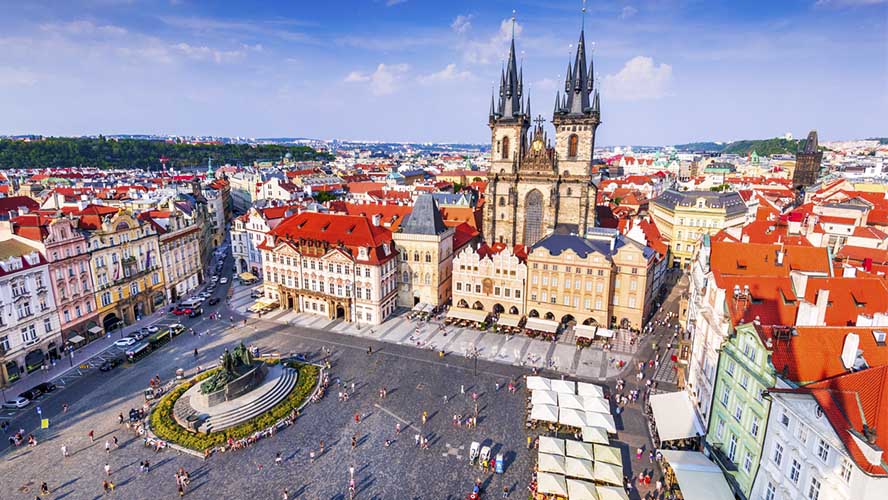
The origins of the Church of Our Lady before Týn
One of the most common questions that springs to mind when viewing this beautiful church is how exactly the building arose. To answer this you have to journey back to the eleventh century when a Romanesque church was built on the site on which it now stands. Such was the church’s popularity that it had to be expanded, which is how the current Gothic construction came about (the remains of the Romanesque church were removed). For best results, the most outstanding architects of the time were commissioned with the project: Matthias of Arras, the lead architect of St Vitus Cathedral, and Peter Parler, head of construction of Charles Bridge.
The aim of the merchant class was to build a church that could compete with the cathedral on the other bank of the Vltava. Over the course of its history, the church passed hands from the Hussites to the Catholics, changing symbols and decoration for years at a time.
How to get inside and what to see in Týn Church
The church is situated right in front of Týn Courtyard, where merchants had to go to pay customs duties on their goods. Týn roughly translates as ‘enclosed’, which is exactly how it stands on the square. The church’s façade is not particularly visible, since it is surrounded by various buildings and situated within the courtyard, which you have to cross to enter the church.
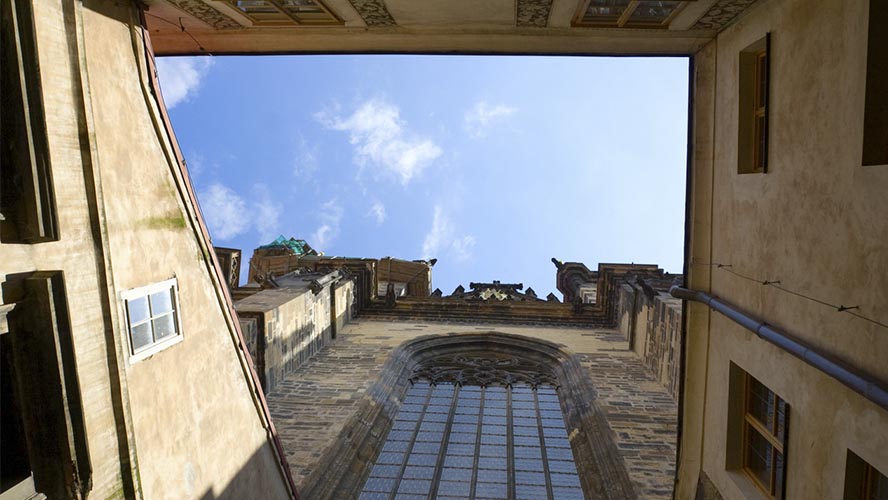
On the outside, the church boasts four Gothic portals, whose tympanums are decorated with sumptuous reliefs. The church’s most striking features, however, are the two prismatic towers topped off by spires, which reach a height of 80 metres. In line with Gothic tradition, one is slightly lower than the other—although this is imperceptible to the human eye—to symbolise Adam and Eve.
On the inside, the Baroque decoration contrasts with the church’s exterior appearance, which owes to a serious fire caused by a lightning strike. As a result, the church was restored in the late seventeenth century.
Interesting facts about Týn Church
On a visit to this Gothic and Baroque masterpiece, you’ll be able to contemplate more than a few gems. Don’t miss any of the features of the church, which is a veritable museum:
- The inside of the different chapels and the altars are decorated with works by renowned Czech artists. Of particular note are the paintings on the High Altar, created by the Baroque artist Karel Škréta depicting the Assumption of the Virgin Mary.
- Practically all the furniture is original, dating from the Baroque period. Be sure to take some time to appreciate the magnificent organ built in 1670, which is the oldest in the city.
- The carved stone canopy was created as a funerary monument for a Hussite archbishop and is one of the most important sights in Týn Church. It was made by the workshop of the famous Gothic sculptor Matěj Rejsek and is worth stopping at to view its four columns topped off by pinnacles, as well as its ornate decoration comprising floral motifs and animal figures.
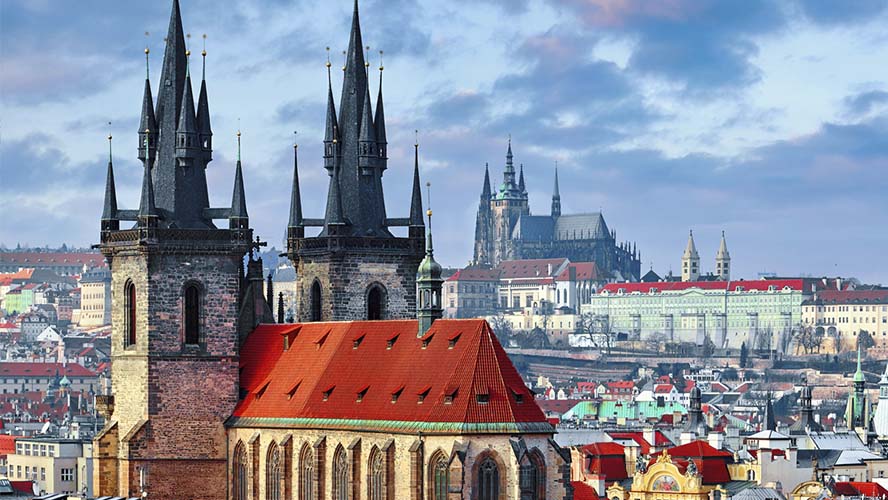
- Another interesting feature are the numerous tombs of illustrious figures that can be found in the church. Particularly noteworthy is that of the eminent Danish astronomer Tycho Brahe, a tireless observer of the sky, who died in Prague in 1601. At the time a great ceremony was held in Týn Church for his burial and if you head to the southern section of the main nave you can still pay your respects.
- The baptismal font, dating from 1414, is one of the few medieval features that have been preserved and the oldest in the whole of Prague.
- In Nazi times, one of the bells of the northern tower was smelted in order to produce ammunition. It wasn’t until 1992 when it was eventually restored and these days the tolling of the bells is complete once again.
- Don’t forget to walk through the square at night to see the church wonderfully illuminated and shimmering against the city’s night sky.
The history of Týn Church goes hand in hand with that of Prague itself, which has left its own indelible mark on this place of worship, a must-visit for familiarising yourself with the city’s past as well as marvelling at its incredible architecture.





























































